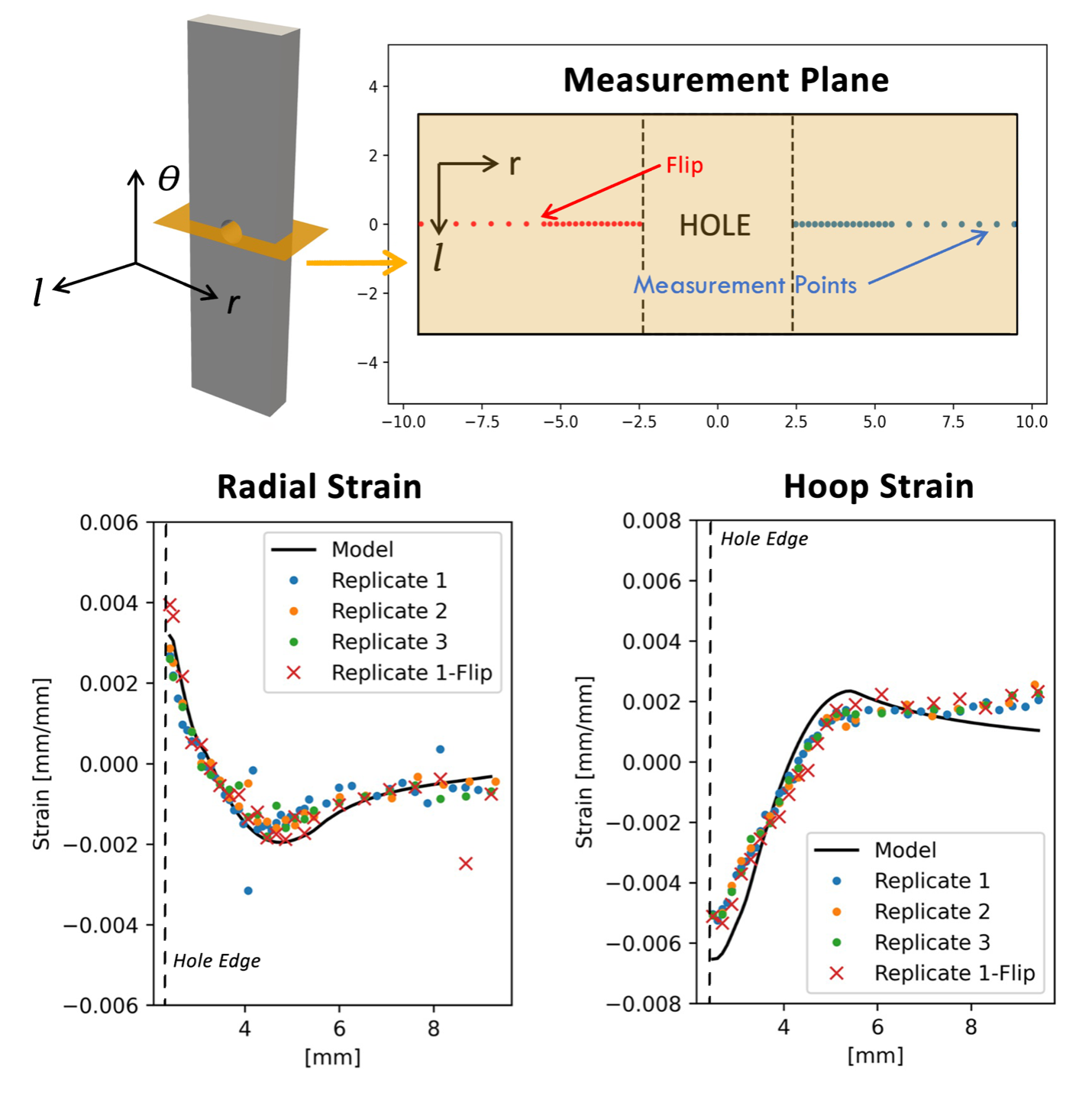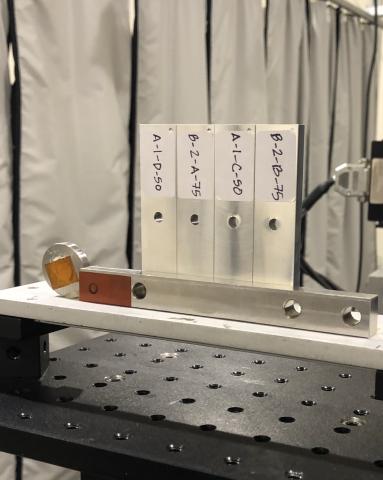The Materials Solutions Network at CHESS (MSN-C) was leveraged to map strains using non-destructive x-ray methods not available at other USAF, Department of Defense, or private sector facilities. The high-flux and high-energy x-rays only available at a synchrotron light source, such as CHESS, enable a critical combination of high penetrating power, spatial resolution and measurement speed. This highlight is just one example of how MSN-C is permitting new, systematic studies of structural materials.
What did the scientists accomplish?
Residual strains were non-destructively measured in six replicate aerospace aluminum alloy CHE samples employing the Structural Materials Beamline (SMB) at MSN-C. The results show highly compressive (–) residual hoop strain and tensile (+) residual radial strain near the hole. The largest strains are within 3 mm of the hole and decay to zero near the exterior edge of the part. A predictive model was leveraged during experimental planning to guide the selection of experimental measurement locations. The measured data agrees well with sister data collected at another synchrotron light source, the Advanced Photon Source, and most critically provides feedback and validation of the process modeling effort.

Bottom: Residual hoop strain and radial strain of three replicate samples. Data from the process simulation model is overlaid.
What are the broader impacts of this work?
The ELMERS program aims to extend the service life of metallic components in USAF aircraft. This will enable maintenance cost savings by safely delaying structural inspections and reducing the number of required maintenance actions. Mechanical treatments to induce engineered residual stresses, such as CHE, can significantly extend component cycle life and are routinely part of depot maintenance. However, credit for these mechanical treatments has until recently not been considered as part of the advanced analyses used to plan depot maintenance activities, primarily due to uncertainties surrounding the process. The new measurements provide quantification of treatment variability as well as a “ground truth” from which to inform and validate process simulation models.
Why is this important?
Metal fatigue limits component lifetimes and drives considerable maintenance costs in the USAF fleet. Parts with stress concentrations, like fastener holes, benefit from the compressive residual stresses induced by CHE, resulting in improved fatigue life and reduced maintenance costs. The application of advanced measurement methods in this effort provides a critical pathway to assess process models and realize the full benefit of CHE.
How was this work funded?
The X-ray analysis work is based upon research conducted at the Materials Solutions Network at CHESS (MSN-C) which is supported by the Air Force Research Laboratory (AFRL) under award FA8650-22-2-5200. Residual stress samples were provided by AFRL.
